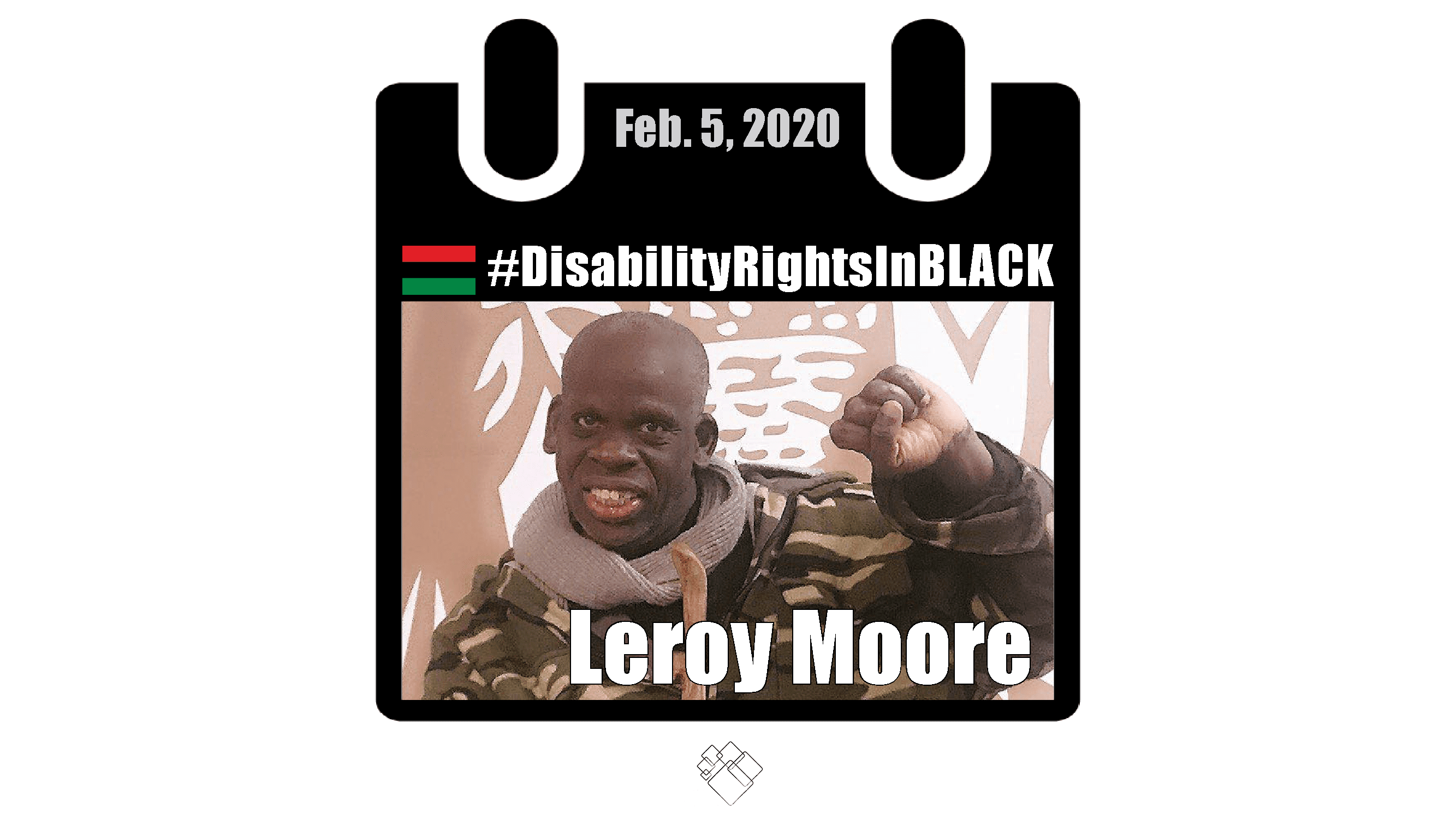It’s Day 5 of our Disability Rights in Black series and it’s time to crank up the music and creativity as we celebrate Leroy Moore! Co-founder of Krip-Hop, a movement designed to amplify the music and messages of disabled Hip-Hop artists, Leroy’s advocacy rhythmically flows throughout his work. He is a poet, writer, artist, documentary filmmaker and mentor to many. Check out a Black History Month message from the man himself!
Audio file of “Black Disabled History 101”:
Transcript:
Leroy Moore: Do you know your black disabled art history? Well it’s about time you learn. This is called Black Disabled Art History 101. Sit down and listen, because there will be a test at the end. Displaying and speaking our history and culture through music, art, and dance. From slavery to homeland security, black disabled artists’ roots grow deep. However, this garden is starving for recognition.
The most famous classical pianist in the mid-to-late 19th century was a black, blind, autistic slave, Tom Wiggins, a.k.a. Blind Tom, was his slave name. His master used him to make money and left him poor and broken. Horace Pippin, the first black, disabled, self-taught painter, lost his arm in World War I. Using his left arm to prop up his right forearm, crafting his first masterpiece depicting horrors of war, or the price he paid for being black, poor, self-taught, and disabled.
Blues is the black anthem. It attracted blind singers and musicians to make a living on the streets. Some made it into recording studios. Blind Willie McTell, born in 1898, played on the streets of Atlanta. Blind Willie Johnson, born around 1902, a street evangelist. Stepmother threw lye in young Johnson’s eyes, causing blindness. Johnson became the first gospel guitarist to record. He died of pneumonia. Hospital refused to admit him due to his blindness.
Blind Blake and Blind Boone’s birthdays are unknown. Blind John William Boone formed his own concert company traveling all over the country. More than 8,000 concerts in the U.S., Canada, Europe, and Mexico. The most popular male blues recording artist of the ’20s was Blind Lemon Jefferson. He was also a street performer. Danced to the blues, rock, jazz, and hip-hop vibrations under the Wild Zappers, a black, deaf dance troop, feeling the rhythm from the motherland to the Chocolate City.
Listen to the melody heartbeat of a black, deaf woman, Jay Fingers. Read, I’m a Proud Black Deaf Woman.
Let’s travel to Jamaica, where in the ’50s, polio affected the island. Skelly, Wise, and Apple are Israel Vibration. They met each other at Mona Rehabilitation Center. Got kicked out because of their religious belief in Rasta. Homeless, poor, and disabled, began to sing on the streets. Now they are the founders of reggae.
Back to Africa, tribal dancing to the drumming, guitar strumming, and singing of Amadou and Mariam, a blind married couple, blending rock, pop, jazz, and hip-hop, with an international flavor.
From Cuba to Asia, India to America, creeping into the hip-hop mainstream, paraplegic emcee Fezo Da Mad One and the Black Kripple. Lifting the roof of oppression that suffocates the hip-hop industry. Throwing away the bling-bling to create Krip Hop politicizing our communities.
Coming home to the Bay Area, to swing from Charles Curtis Blackwell, and back to jazz poetry celebration. So get out your #2 pencils for your final on Black Disabled Art History 101.
Learn more about:
Sins Invalid
POOR Magazine
National Black Disability Coalition
Share our tribute to Leroy Moore on Facebook and Twitter.

